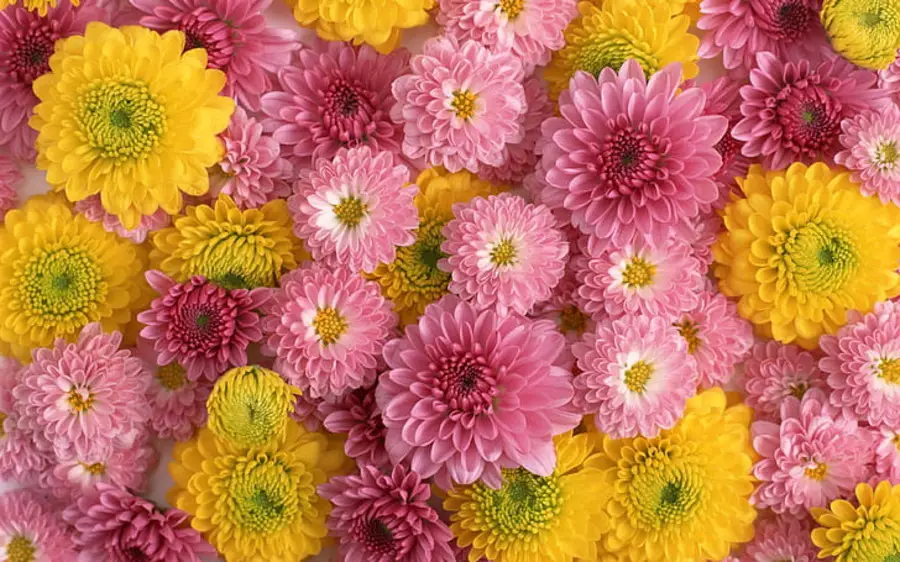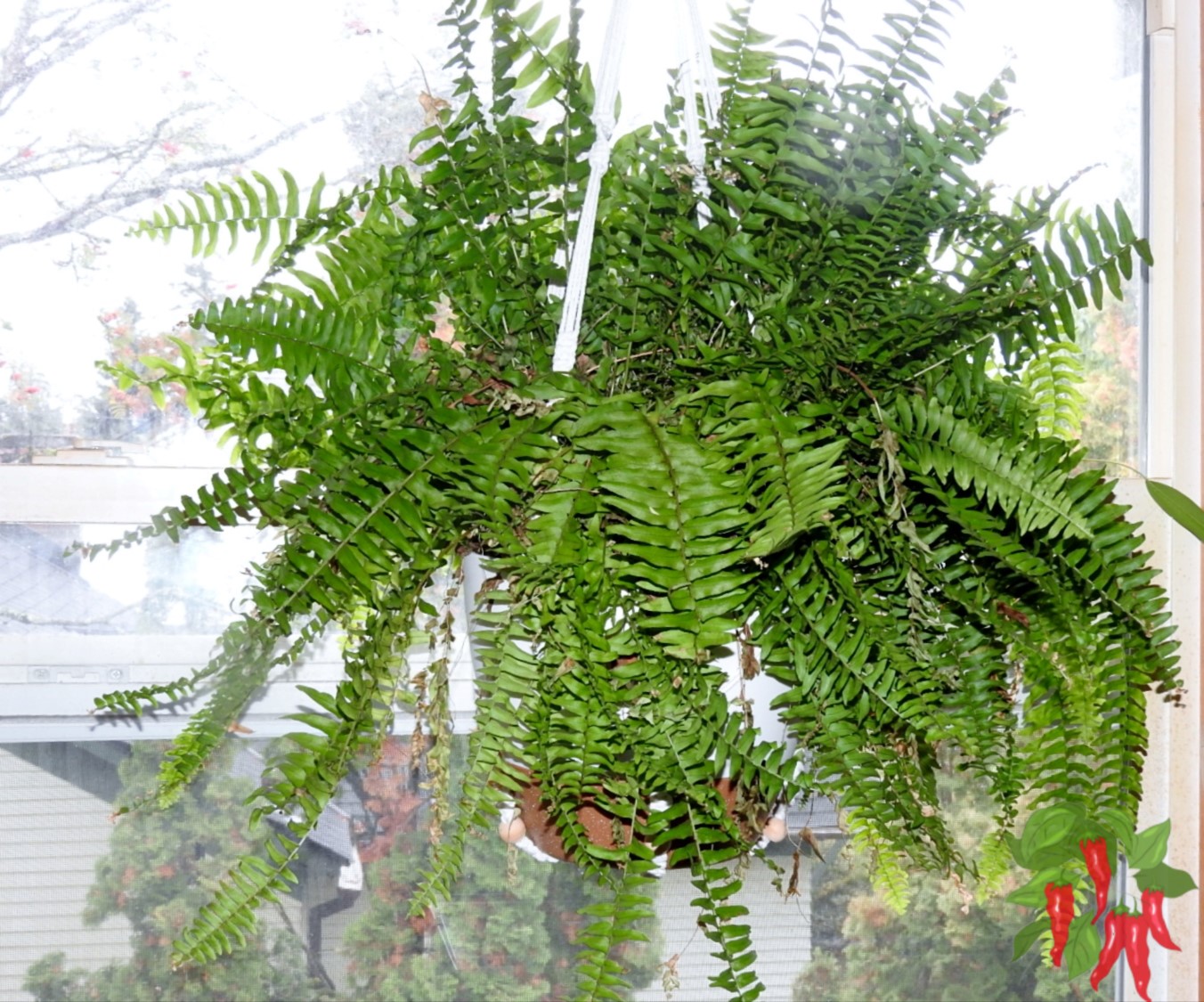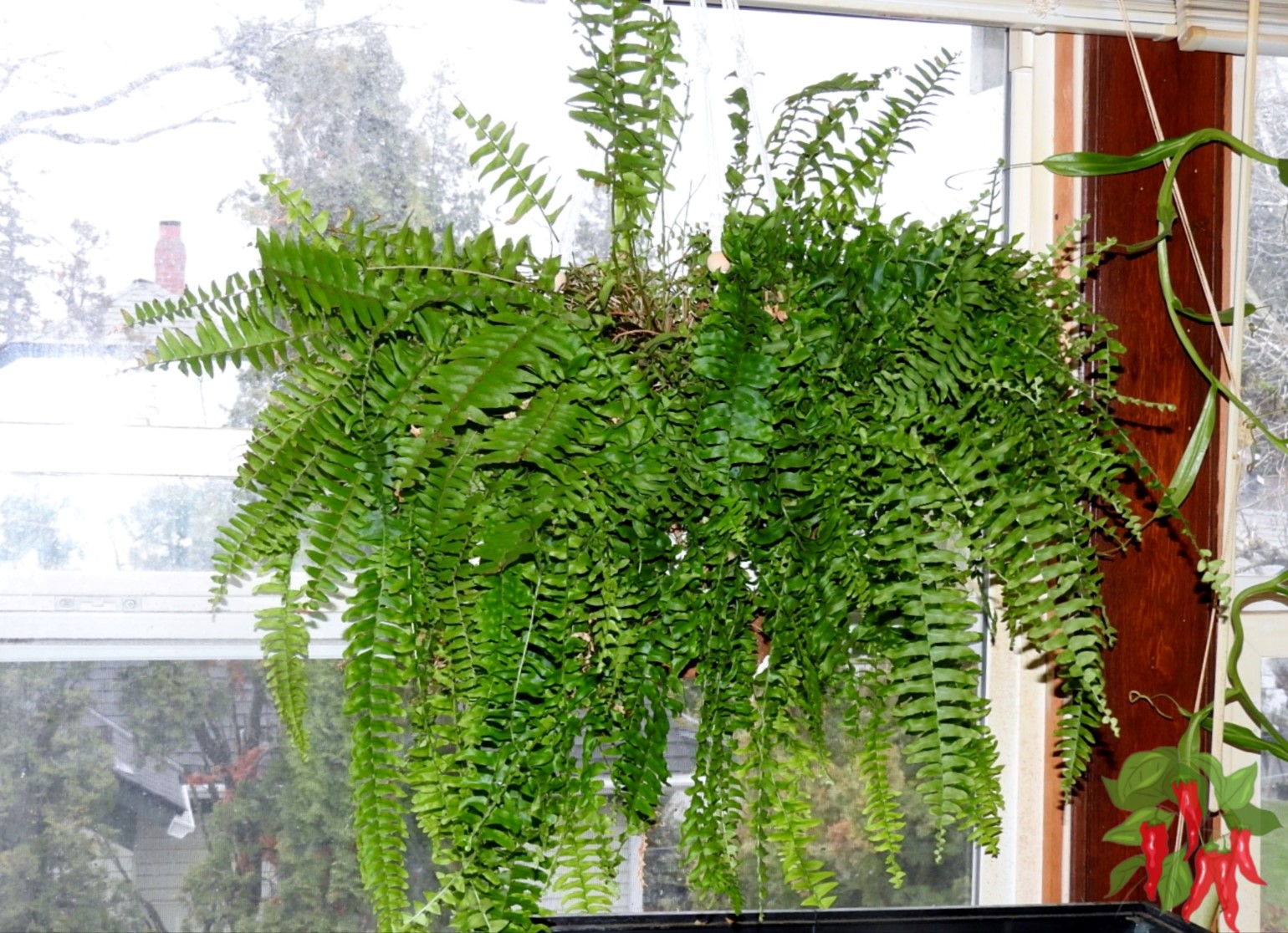This post contains affiliate links. If you buy something from one of our links we may earn a commission. Thanks

Chrysanthemum Indoor Plant Care made simple! Learn easy care tips and Feng Shui placement tricks to keep your Chrysanthemums thriving indoors.
Chrysanthemum Indoor Plant Care is easier than you think, and it comes with stunning rewards.
These vibrant blooms brighten your home and carry rich Feng Shui symbolism for joy and longevity.
With a few simple tips, you can grow healthy, happy Chrysanthemums and create a balanced, harmonious indoor space.
Chrysanthemum Indoor Plant Care Key Takeaways
- Chrysanthemum Indoor Plant Care involves providing bright indirect light
- Watering when the top inch of soil is dry, and using well-draining soil.
- For Feng Shui, place them in living rooms or entryways to invite joy and harmony.
- With regular fertilizing and seasonal care, Chrysanthemums will thrive and bring vibrant energy to your home.
Chrysanthemum Indoor Plant Care: Easy Feng Shui Growth Tips

2 Yellow Chrysanthemum Plants Live, 3 Inches and 5 Inches Tall, Live Chrysanthemum Plants, Chrysanthemum Flowers Plant
- Many people struggle to keep their indoor Chrysanthemums thriving while also maximizing their Feng Shui benefits.
- Without proper care and placement, these beautiful blooms may fade quickly, losing their symbolic joy and vitality.
- By combining easy care tips with strategic Feng Shui placement, you can enjoy vibrant Chrysanthemums and enhance positive energy in your home. Let’s learn how.
1. Chrysanthemum Indoor Plant Care
Caring for Chrysanthemums indoors is a rewarding way to bring vibrant color and positive energy into your home.
These stunning flowers are perennials when grown indoors and thrive with a little attention to their basic needs and can enhance your space’s harmony and vitality when placed according to Feng Shui principles.
Let’s explore how light, water, soil, feeding, and placement all work together to create lasting blooms.
Basic Care Needs for Indoor Chrysanthemums
To grow healthy Chrysanthemums indoors, focus on providing the right environment:
- Light: Place your Chrysanthemums in bright, indirect light. They thrive near a sunny window but should be protected from harsh, direct sunlight that can scorch their leaves.
- Water: Water them when the top inch of soil feels dry. Avoid overwatering, as it can cause root rot, but ensure the soil stays consistently moist during blooming periods.
- Soil: Use a well-draining mix such as coco coir and perlite. This prevents waterlogging while retaining enough moisture to keep the plant hydrated.
- Feeding: During the growing season, feed your plant with a balanced liquid fertilizer every 2-4 weeks. Stop fertilizing in winter when the plant goes dormant.
Feng Shui Placement for Chrysanthemums
In Feng Shui, Chrysanthemums symbolize joy, longevity, and vitality. Their placement can enhance positive energy and brighten your space:
- Living Rooms and Entryways: Place your Chrysanthemums in social spaces to encourage harmony and vibrant energy during gatherings.
- Wealth and Health Corners: Align your plant with the Feng Shui Bagua map to amplify prosperity and family well-being. Chrysanthemums work well in the Southeast (wealth) or East (health) corners of your home.
Why Growing Chrysanthemums Indoors is Worth It
Chrysanthemums aren’t just a visual treat; they offer practical and energetic benefits:
- Air Purification: Chrysanthemums are known to filter toxins like benzene from the air, improving your indoor air quality.
- Mood Booster: Their bright, cheerful blooms add a splash of color and uplift the energy in your home.
- Feng Shui Energy: By placing Chrysanthemums in key areas, you can invite harmony, joy, and prosperity into your space.
By meeting their basic care needs and following Feng Shui principles, you’ll enjoy healthy, vibrant Chrysanthemums that bring beauty, clean air, and a balanced flow of energy into your home.
2. Growing Chrysanthemums Indoors and Outdoors

2 Orange Chrysanthemum Plants Live, 3 to 5 Inches Tall, Live Chrysanthemum Plants Outdoor, Chrysanthemum Flowers Plant
Chrysanthemums are versatile plants that can thrive both indoors and outdoors, but their care routines differ depending on their environment.
Understanding these differences and knowing how to transition outdoor Chrysanthemums to indoor spaces ensures your plants remain healthy and vibrant throughout the year.
Indoor vs. Outdoor Care Routines
While the basic needs for light, water, and soil remain consistent, the environment greatly affects how you care for Chrysanthemums.
- Light:
- Indoors: Provide bright, indirect light by placing your plant near a sunny window. Avoid exposure to direct sunlight, which can scorch leaves indoors.
- Outdoors: Outdoor Chrysanthemums thrive in full sun, requiring at least 6 hours of direct sunlight daily for vibrant blooms.
- Watering:
- Indoors: Water when the top inch of soil feels dry, and ensure the pot has drainage holes to prevent overwatering.
- Outdoors: Outdoor plants may require more frequent watering due to faster evaporation in the sun and wind.
- Feeding:
- Indoors: Fertilize every 2-4 weeks during the growing season and stop during dormancy.
- Outdoors: Use slow-release fertilizer in spring and supplemental feeding during the blooming season for sustained growth.
Transitioning Outdoor Chrysanthemums to Indoor Spaces
Bringing your Chrysanthemums indoors for winter or year-round care requires careful planning to avoid plant shock:
- Acclimate Gradually: Move your plant to a shaded area outside for a few days before transitioning it indoors to help it adjust to lower light levels.
- Inspect for Pests: Check for insects or pests and treat the plant before bringing it inside to avoid infestations.
- Prune if Necessary: Trim back any dead or leggy growth to refresh the plant and encourage healthier growth indoors.
Creating the Perfect Indoor Environment
Indoor Chrysanthemums need the right conditions to thrive:
- Temperature: Maintain a comfortable range of 65–75°F, avoiding sudden temperature drops or drafts.
- Humidity: Keep the humidity moderate; use a tray of water or a humidifier if the air is very dry.
- Soil: Use well-draining soil like a mix of coco coir and perlite to retain moisture without waterlogging.
Feng Shui Insight
When moving Chrysanthemums indoors, place them in Feng Shui-appropriate areas like the living room or entryway to maintain their joyful energy and promote harmony.
By tailoring care routines to their environment and transitioning carefully, your Chrysanthemums will thrive indoors and outdoors, bringing their cheerful beauty and positive energy wherever they grow.
3. Feng Shui Placement for Chrysanthemums

2 Chrysanthemum Flower Live Plants, Red Flowers, 4 to 6 Inc Tall, Chrysanthemum Plant Live Plugs for Gardening Indoors Outdoors, Mums Plant Live
In Feng Shui, Chrysanthemums are symbols of joy, vitality, and longevity. Their placement within your home can enhance the flow of positive Chi, bringing balance and harmony to your space.
Choosing the right locations ensures your Chrysanthemums thrive but also uplift the energy around them.
Key Locations for Chrysanthemums
Strategic placement is essential to maximize the Feng Shui benefits of your Chrysanthemums:
- Living Rooms: Place them in communal spaces to encourage harmony and positive interactions. Their vibrant blooms make them a natural fit for areas where family and friends gather.
- Wealth Corner (Southeast): Align your plant with the wealth area of the Feng Shui Bagua map to invite prosperity and abundance.
- Entryways: Chrysanthemums in the entryway welcome joy and good energy into your home, setting a positive tone for all who enter.
- Health Sector (East): Placing them here promotes vitality and well-being for everyone in the household.
Enhancing Harmony and Energy Balance
Chrysanthemums can amplify balance and vitality in your space when thoughtfully placed:
- Pair them with elements like wood furniture or natural textures to reinforce their connection to growth and life.
- Use pots in auspicious colors, such as gold or red, to complement their Feng Shui symbolism of prosperity and joy.
- Rotate the plants occasionally to ensure even growth and maintain a balanced energy flow.
Avoiding Areas That Stifle Energy Flow
To keep your Chrysanthemums and their energy thriving, avoid these common pitfalls:
- Cramped or Dark Corners: These areas can block Chi flow and make your plant struggle. Opt for well-lit, open spaces instead.
- Bathrooms: Bathrooms tend to drain energy in Feng Shui, making them less ideal for Chrysanthemums.
- Direct Paths of Movement: Avoid placing plants where they may obstruct movement or disrupt the natural flow of Chi.
By positioning Chrysanthemums in key Feng Shui locations and avoiding areas that hinder energy flow, you can create a joyful and harmonious atmosphere in your home.
These placements ensure your Chrysanthemums bloom beautifully and radiate positive energy to support your well-being.
4. Chrysanthemums’ Symbolism in Feng Shui
Chrysanthemums are deeply rooted in Chinese traditions and Feng Shui practices, symbolizing joy, vitality, and longevity.
These vibrant flowers carry cultural significance, representing happiness and positive energy.
By aligning their placement with your intentions, you can enhance the energy flow in your home and create a harmonious atmosphere.
Cultural Significance of Chrysanthemums
In Chinese culture, Chrysanthemums are celebrated as symbols of resilience and long life:
- Longevity: Often associated with the autumn season, they represent enduring vitality and strength.
- Joy and Happiness: Their bright, cheerful blooms are seen as a source of uplifting energy, perfect for creating a positive mood.
- Prosperity: Chrysanthemums are linked to abundance and are commonly used in celebrations to invite blessings and success.
Symbolism in Feng Shui
In Feng Shui, Chrysanthemums embody growth and balance, making them powerful tools for harmonizing your space:
- Joy: Their vibrant energy is thought to encourage happiness and reduce stress.
- Vitality: The flowers symbolize life force and renewal, energizing any room they occupy.
- Harmony: With their balanced forms and natural beauty, they promote peaceful energy flow.
Aligning Chrysanthemums with Your Intentions
To maximize the benefits of Chrysanthemums in your home, consider your goals and place them accordingly:
- For Joy and Social Energy: Place Chrysanthemums in living rooms or dining areas to uplift the mood and enhance social connections.
- For Longevity and Vitality: Use them in the health sector (East) of your home to promote well-being and enduring energy.
- For Prosperity: Position them in the wealth corner (Southeast) to attract abundance and financial growth.
- For Personal Growth: Keep them in your workspace or a personal corner to inspire motivation and creativity.
By understanding their symbolism and placing Chrysanthemums with intention, you can harness their joyful and vibrant energy to create a balanced, prosperous, and harmonious living space.
These blooms are more than just decorations. They’re living reminders of positivity and resilience.
5. Watering and Fertilizing Chrysanthemums

2 Chrysanthemum Flower Live Plants, 4 to 6” in Height, White Flowers, Chrysanthemum Plant Live Plugs for Gardening Indoors Outdoors, Mums Plant Live
Proper watering and fertilizing are crucial for keeping your Chrysanthemums healthy and blooming.
A consistent routine ensures they stay vibrant, while seasonal adjustments help them adapt to changing conditions.
Let’s break down the best practices to prevent common issues and encourage lush, colorful blooms.
Establishing a Watering Schedule
Chrysanthemums need just the right amount of water to thrive, as over- or under-watering can quickly cause problems:
- When to Water: Check the top inch of soil—water when it feels dry.
- How to Water: Water thoroughly, allowing excess to drain to avoid waterlogging. Pots with drainage holes are a must.
- Frequency: During the active growing season, water more frequently. Reduce watering in winter when the plant goes dormant.
Tip: Keep the soil consistently moist during blooming periods, but never let it stay soggy.
Choosing the Right Fertilizer
Feeding your Chrysanthemums gives them the nutrients needed for vibrant blooms and healthy foliage:
- Type of Fertilizer: Use a balanced liquid fertilizer (e.g., 10-10-10) during the growing season.
- Frequency: Fertilize every 2-4 weeks during active growth and blooming.
- Seasonal Feeding: Stop fertilizing in late fall to let the plant rest during its dormant phase.
Tip: Avoid over-fertilizing, which can lead to excessive foliage growth at the expense of flowers.
Seasonal Adjustments
Chrysanthemums’ needs change with the seasons, so tweak your watering and feeding schedule accordingly:
- Spring and Summer: Water regularly and fertilize to support vigorous growth and flower production.
- Fall: Maintain watering as needed for blooming, but start tapering off fertilizer toward the end of the season.
- Winter: Reduce watering and stop feeding entirely. Allow the plant to rest, keeping the soil just slightly moist.
By following a consistent watering and fertilizing routine and adjusting for seasonal changes, your Chrysanthemums will reward you with lush, vibrant blooms.
Pair this care with mindful placement in your home for a balance of beauty and positive energy.
6. Propagating Chrysanthemums

Chrysanthemum Plants Live Tree Well Rooted, 4 to 6 Inches Tall, Mums Plants Live, 2 Plants for The Patio and Garden (Orange)
Propagating Chrysanthemums is a simple and satisfying way to grow new plants while spreading positivity.
Whether you’re rooting cuttings in water or soil, the process is straightforward and rewarding.
In Feng Shui, sharing propagated plants amplifies the flow of positive energy, making this practice both practical and symbolic.
Simple Techniques for Propagation
Chrysanthemums are easy to propagate using stem cuttings. Here’s how:
- Water Propagation:
- Select a healthy stem with at least two nodes (the small bumps where roots will grow).
- Cut a 4–6 inch piece below a node and remove the leaves from the bottom half.
- Place the cutting in a glass of water, ensuring the node is submerged.
- Change the water every few days, and roots should appear in 2–3 weeks.
- Soil Propagation:
- Take a cutting as described above and dip the cut end in rooting hormone (optional but helpful).
- Plant the cutting in moist, well-draining soil, covering at least one node.
- Keep the soil slightly moist and place the pot in bright, indirect light.
- Roots should develop in 2–4 weeks.
Feng Shui Benefits of Sharing Propagated Plants
In Feng Shui, the act of giving and receiving plants strengthens connections and promotes a flow of positive Chi:
- Sharing Growth: Propagating and gifting Chrysanthemums symbolizes joy, renewal, and longevity.
- Enhancing Relationships: Giving plants to loved ones fosters harmony and strengthens bonds.
- Renewing Energy: Each cutting represents new beginnings, refreshing the energy in your home and others.
Common Challenges During Propagation
Even though propagation is simple, a few issues can arise. Here’s how to troubleshoot:
- Cuttings Not Rooting: Ensure the cutting has at least one node submerged in water or buried in soil. Use fresh, healthy stems for better success.
- Rotting Cuttings: Avoid waterlogged soil or stagnant water, and always use sterilized tools to make clean cuts.
- Wilting Leaves: Place the cuttings in bright, indirect light and maintain consistent moisture. Too much or too little light can stress the cuttings.
By mastering these propagation techniques, you’ll grow new Chrysanthemums and spread their joyful and harmonious energy.
Whether you keep them for yourself or share them with others, propagating Chrysanthemums is a practice that cultivates beauty and positivity.
7. Troubleshooting Chrysanthemum Growth
Chrysanthemums are resilient plants, but they’re not immune to challenges.
Whether it’s wilting flowers, yellowing leaves, or pesky insects, recognizing and addressing these problems quickly will ensure your plant thrives and blooms beautifully.
Here’s how to troubleshoot common issues and keep your Chrysanthemums in top shape.
Common Issues and Solutions
- Wilting Flowers:
- Cause: Often caused by underwatering, excessive heat, or natural aging of blooms.
- Solution: Water the plant thoroughly and move it to a cooler location with indirect light. Deadhead spent blooms to encourage new flowers.
- Yellowing Leaves:
- Cause: Overwatering, poor drainage, or insufficient light.
- Solution: Let the soil dry slightly between waterings and ensure your pot has proper drainage. Move the plant to a brighter spot if light is limited.
- Pests (e.g., aphids, spider mites):
- Cause: Dry indoor air and weakened plants can attract pests.
- Solution: Wipe leaves with a damp cloth to remove pests. Use insecticidal soap or neem oil for persistent infestations. Increase humidity to deter spider mites.
Ensuring Healthy Growth and Lasting Blooms
Healthy Chrysanthemums require consistent care and attention to their environment:
- Deadheading: Regularly remove faded flowers to direct energy toward new growth.
- Balanced Feeding: Fertilize every 2-4 weeks during the growing season to provide essential nutrients.
- Ideal Light: Keep them in bright, indirect light to support growth and blooming.
When to Repot or Rejuvenate
Sometimes, Chrysanthemums need a fresh start to overcome issues:
- When to Repot: If the plant is root-bound or the soil has compacted, repot it into a slightly larger container with fresh, well-draining soil.
- Rejuvenating Struggling Plants: Trim back leggy or damaged stems to encourage fresh, bushy growth. Repot if the roots appear unhealthy or crowded.
Identifying issues early and implementing these solutions keep your Chrysanthemums healthy and blooming for longer.
Pair good care with strategic Feng Shui placement to enjoy their beauty and energy to the fullest.
8. Best Varieties of Chrysanthemums for Feng Shui
Chrysanthemums are ideal for enhancing joy, happiness, and longevity in Feng Shui.
Choosing the right varieties, colors, and forms ensures they complement your space and amplify positive energy.
Top Chrysanthemum Varieties for Positive Energy
- Yellow Chrysanthemums: Represent the sun’s energy and bring warmth, joy, and happiness into your home.
- Red Chrysanthemums: Symbolize vitality and prosperity, perfect for attracting good fortune and energizing spaces.
- White Chrysanthemums: Promote clarity, peace, and purity, offering calm energy for restful areas.
Choosing Colors and Forms Aligned with Feng Shui
- Colors:
- Green: Represents the wood element, symbolizing growth and vitality.
- Red: Represents the fire element, adding passion and energy to your space.
- Yellow: Represents the earth element, creating stability and grounding energy.
- White: Represents the metal element, promoting clarity and precision.
- Blue: Represents the water element, fostering wisdom and calmness.
- Forms:
- Choose round, full blooms to encourage unity and completeness.
- Multi-layered petals symbolize abundance and longevity.
Availability on Amazon
Many Chrysanthemum varieties are available on Amazon
Selecting Chrysanthemums that align with Feng Shui principles and fit your indoor space enhances the flow of positive energy, joy, and longevity throughout your home.
9. Chrysanthemums in Celebration Spaces
Chrysanthemums are the perfect addition to celebratory areas, bringing joy, vibrancy, and positive energy to gatherings.
Whether in dining rooms, entryways, or seasonal displays, their placement and arrangement can elevate the atmosphere and promote harmony during celebrations.
Using Chrysanthemums to Elevate Celebratory Spaces
- Dining Rooms:
- Place a centerpiece of bright Chrysanthemums on the dining table to encourage warmth and cheerful conversations.
- Pair with complementary colors like gold or red to enhance the celebratory energy.
- Entryways:
- Position Chrysanthemums near the entrance to welcome guests and set a positive tone for the event.
- Use tall pots or pedestal stands to make a bold, inviting statement.
Arranging Chrysanthemums in Feng Shui-Friendly Ways
- Round Arrangements:
- Opt for round bouquets or pots to symbolize unity and completeness, fostering togetherness among guests.
- Balanced Placement:
- Place pairs of Chrysanthemums on either side of an entryway or mantel to create symmetry and balanced energy flow.
- Auspicious Colors:
- Use Chrysanthemums in Feng Shui-friendly colors like red, yellow, or orange for happiness, prosperity, and vibrancy.
Seasonal Decorating Tips with Chrysanthemums
- Spring and Summer:
- Incorporate bright yellow and pink Chrysanthemums into fresh floral arrangements.
- Pair with greenery for a light, airy look that reflects the season’s energy.
- Autumn and Winter:
- Use warm tones like deep red, gold, and white Chrysanthemums in centerpieces or wreaths.
- Combine with seasonal accents like pinecones or berries for a cozy, festive display.
By thoughtfully placing and arranging Chrysanthemums in celebration spaces, you can create a welcoming, joyful environment that enhances gatherings and leaves a lasting impression on guests.
Their vibrant energy is the perfect complement to any occasion.
10. Seasonal Care for Chrysanthemums
Chrysanthemums thrive year-round when their care routines are adjusted to match the seasons.
Preparing them for winter dormancy and encouraging fresh growth in spring you’ll enjoy vibrant blooms and lasting energy.
Seasonal Feng Shui practices can also keep the energy in your home balanced and refreshed.
Adjusting Care Routines Throughout the Year
- Spring:
- Increase watering frequency as the plant comes out of dormancy and begins to grow.
- Fertilize every 2-4 weeks with a balanced liquid fertilizer to support fresh growth.
- Repot or refresh the soil if needed to give the plant a healthy start.
- Summer:
- Provide bright, indirect light and ensure consistent moisture during active growth.
- Prune back any leggy or spent growth to maintain a neat appearance.
- Keep the plant cool during hot spells to avoid stress.
- Autumn:
- Encourage blooming by maintaining regular watering and fertilizing schedules.
- Deadhead faded flowers to extend the blooming period.
- Position the plant in Feng Shui-friendly areas like the dining room or entryway for celebratory energy.
- Winter:
- Reduce watering and stop fertilizing as the plant enters dormancy.
- Store the plant in a cool, well-lit area with minimal disturbance.
- Trim back stems to about 4 inches and keep the soil slightly moist.
Preparing for Dormancy in Winter
- Prune back the plant after its final bloom cycle, removing dead or yellowing leaves.
- Place the Chrysanthemum in a cooler spot (50–60°F) to mimic its natural dormancy period.
- Water sparingly, just enough to prevent the soil from drying out completely.
Encouraging Growth in Spring
- Gradually move the plant to a brighter, warmer spot as temperatures rise.
- Resume regular watering and fertilizing to support new shoots.
- Divide and repot the plant if it has outgrown its container during dormancy.
Seasonal Feng Shui Practices
- Spring Refresh: Place Chrysanthemums in the health sector (East) of your home to symbolize rejuvenation and new beginnings.
- Summer Balance: Use Chrysanthemums in vibrant colors like yellow or red to enhance social energy in living or dining areas.
- Autumn Warmth: Incorporate warm-toned Chrysanthemums into entryways or celebration spaces to reflect gratitude and abundance.
- Winter Harmony: Position dormant Chrysanthemums in quiet, reflective spaces to symbolize rest and preparation for growth.
By adjusting your care routines and incorporating seasonal Feng Shui practices, your Chrysanthemums will remain vibrant and full of positive energy, enhancing your home’s beauty and balance throughout the year.
11. Chrysanthemums and Positive Energy Flow
Chrysanthemums are more than just beautiful blooms. They’re powerful enhancers of positive Chi (energy) in Feng Shui.
Their vibrant, balanced forms encourage smooth energy circulation, fostering harmony and vitality in your home.
By placing them strategically and incorporating mindful rituals, you can amplify their ability to create a harmonious and joyful environment.
How Chrysanthemums Encourage Smooth Chi Circulation
- Flow and Balance: The rounded, layered shapes of Chrysanthemum flowers symbolize completeness and unity, helping Chi move smoothly and evenly through space.
- Uplifting Energy: Their bright, cheerful colors infuse your home with vitality, reducing stagnation and promoting a light, joyful atmosphere.
- Resilience Symbolism: As plants that thrive even in cooler months, Chrysanthemums embody endurance and strength, reinforcing stable and steady energy flow.
Placement Strategies for Vibrant Energy
To maximize the positive effects of Chrysanthemums, place them in key areas of your home:
- Living Rooms and Dining Areas: Promote harmonious interactions and lively conversations by placing Chrysanthemums in social spaces.
- Entryways: Position them near the front door to invite positive Chi into your home and set an uplifting tone for the space.
- Wealth Corner (SouthEast): Align with Feng Shui’s wealth sector to enhance prosperity and abundance.
- Private Spaces: Use softer-colored Chrysanthemums, like white or pastel tones, in bedrooms or personal spaces to create a calming energy.
Rituals and Practices to Amplify Positive Energy
Incorporate these simple rituals to deepen the energy-cleansing effects of your Chrysanthemums:
- Leaf and Flower Cleaning: Regularly wipe down leaves and gently dust blooms to keep them vibrant and their energy unblocked.
- Refresh Energy Flow: Rotate the pot occasionally to ensure even light exposure and balanced energy distribution.
- Add Symbolic Elements: Place a small crystal, coin, or charm near the plant to amplify its energy and align it with your intentions.
By thoughtfully placing and tending to Chrysanthemums, you can cultivate a space where Chi flows freely, creating a harmonious, joyful, and energized environment.
These blooms brighten your home and support balance and positivity in every corner they grace.
Chrysanthemum Indoor Plant Care FAQs
Curious about growing Chrysanthemums indoors? Here are answers to the most common questions about care, maintenance, and maximizing Feng Shui benefits.
Q: How much light do indoor Chrysanthemums need?
A: Indoor Chrysanthemums need 4-6 hours of direct sunlight daily to thrive. Place them near a bright window that receives direct sunlight, and rotate the pot occasionally to ensure even light exposure.
Q: How often should I water my Chrysanthemums?
A: Water your Chrysanthemums when the top inch of soil feels dry. Be careful not to overwater, as this can lead to root rot.
Q: What’s the best placement for Chrysanthemums in Feng Shui?
A: Place Chrysanthemums in living rooms, dining rooms, or entryways to invite joy and positive energy. They are especially suited for social spaces.
Q: How do I fertilize indoor Chrysanthemums?
A: Use a balanced liquid fertilizer every 2-4 weeks during the growing season. Stop feeding during winter when the plant is dormant.
Q: Can I propagate Chrysanthemums at home?
A: Yes! Take stem cuttings with at least two nodes and root them in water or soil. Once roots develop, transfer them to a pot with well-draining soil.
Q: Why are my Chrysanthemum’s flowers wilting?
A: Wilting flowers may indicate overwatering, poor drainage, or pests. Check the soil’s moisture and ensure the pot has drainage holes.
Q: Are Chrysanthemums toxic to pets?
A: Yes, Chrysanthemums are toxic to pets if ingested. Keep them out of reach of cats and dogs to ensure their safety.
Q: What kind of soil is best for Chrysanthemums?
A: Well-draining soil, such as a mix of coco coir and perlite, works best for Chrysanthemums. This helps retain moisture without waterlogging the roots.
By mastering these basics of Chrysanthemum Indoor Plant Care, you’ll enjoy healthy, vibrant blooms and a home filled with joy and positive energy. Let me know if you’d like to explore any topic further!
Caring for Chrysanthemums Indoors Conclusion
Combining proper care with Feng Shui principles ensures vibrant, lasting blooms and brings harmony and positive energy into your home.
Chrysanthemums symbolize joy, vitality, and longevity, making them a powerful addition to any indoor space.
Nurturing their growth and placing them thoughtfully can create a home that radiates beauty and balance.
Key Takeaways
- Simple Care Routines: Chrysanthemums thrive with the right balance of water, light, and fertilizer, making them easy to maintain indoors.
- Feng Shui Benefits: Strategic placement enhances their symbolic energy, inviting joy, prosperity, and harmony into your space.
- Year-Round Growth: Seasonal care and propagation keep Chrysanthemums healthy and vibrant, spreading positive energy throughout your home.
With the right approach, Chrysanthemums become more than just beautiful flowers—they transform your home into a space filled with vitality and happiness. Happy growing!
✨ Indoor Plants and Feng Shui
Enhance harmony, balance, and positive energy in your home with these Feng Shui indoor plant guides.
- 🌱 Feng Shui Plants (Pillar Guide)
- 🏡 Indoor Plants and Feng Shui
- 🌿 Feng Shui Vertical Gardens for Office Spaces
- 🌸 Best 24 Feng Shui Indoor Plants
- 💧 Growing Feng Shui Plants
- 🌳 Common Chinese House Plants for Feng Shui
- 🪴 Feng Shui Hanging Plants
- 🛏️ Feng Shui Bedroom Plants
- 🍃 ZZ Plant Feng Shui
- 🌱 Using Feng Shui in Vertical Gardens
- 🎋 Growing Lucky Bamboo in Feng Shui
- 🏠 Indoor Plants for Feng Shui
- ☯️ Indoor Plants for Positive Energy
- 🌼 Chinese Evergreen Care
- 🌺 Growing Peonies Indoors and Outdoors
- See all articles in our Indoor Plants and Feng Shui category
Related Content
Visit my Amazon Influencer Page for videos and gardening products Grow Your Own Garden









